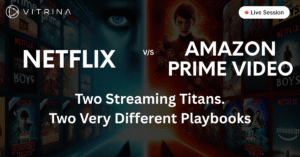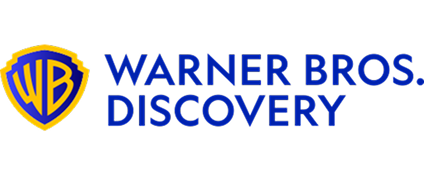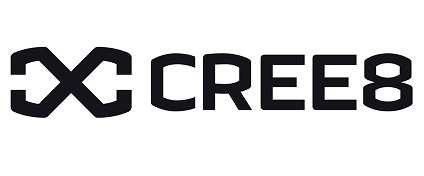The Strategic Imperative of Partnership, Entertainment Industry

Introduction
For C-suite executives in the Media & Entertainment (M&E) sector, the decision to engage in a new partnership is no longer optional—it is a mandatory component of growth.
In an environment defined by fragmented consumer attention, global production needs, and intense competition, organic growth alone is often insufficient.
The most effective strategy is the deliberate, data-driven formation of an external alliance. A successful partnership, entertainment industry deal is the mechanism for de-risking content investment, optimizing the global supply chain, and securing immediate access to new markets.
This is a framework for identifying, vetting, and executing the strategic alliances that will determine market share in the next decade.
Table of content
- The Strategic Imperative: The Era of the Entertainment Supply Chain Partnership
- Mitigating Risk and Maximizing ROI: The Three Core Partnership, Entertainment Industry Models
- The Critical Challenge: Partner Discovery and Vetting in a Fragmented Market
- From Data to Deal: How to Execute a High-Value M&E Partnership, Entertainment Industry Strategy
- How Vitrina Transforms the Partnership Pipeline
- Conclusion: The Future of Cross-Border Collaboration
- Frequently Asked Questions
Key Takeaways
| Core Challenge | Fragmented global production and distribution networks make partner discovery slow, opaque, and high-risk. |
| Strategic Solution | Implement a data-centric strategy for alliance selection, focusing on verified track records and supply chain fit over intuition. |
| Vitrina’s Role | Vitrina provides the verified intelligence layer to track projects, companies, and executive decision-makers globally, transforming scouting and vetting into a precise, systematic exercise. |
The Strategic Imperative: The Era of the Entertainment Supply Chain Partnership
For senior M&E executives, strategic partnership, entertainment industry is the fastest route to filling a critical business gap.
This is not about one-off marketing tie-ins or traditional affiliate programs; it is about embedding an external partner directly into your core business model to achieve specific strategic objectives.
These alliances are essential for reducing the burden of an increasingly complex and globalized media and entertainment supply chain.
The key drivers behind this imperative are structural. As content consumption shifts from linear broadcasts to digital platforms, production must become simultaneously global and hyper-local, requiring expertise, talent, and infrastructure that no single studio or streamer can maintain autonomously. The core challenge, therefore, is systemic.
The industry must move beyond relational sourcing—relying on personal contacts and history—to a systematic, evidence-based approach to partner selection. Sourcing for co-production, localization, VFX, and distribution now requires intelligence across dozens of territories, necessitating granular insight into a partner’s actual track record, not just their public profile.
The complexity of cross-border financing and regulatory compliance means an unvetted partner can expose the entire operation to significant financial and legal risk.
Mitigating Risk and Maximizing ROI: The Three Core Partnership, Entertainment Industry Models
Strategic alliances in M&E can be segmented into three high-value models, each designed to address a distinct pressure point within the supply chain. Mastery of these models allows the executive to precisely target their growth or risk mitigation efforts.
Co-Production Alliances: The Financial De-Risking Strategy
A co-production agreement is the single most powerful tool for sharing capital and creative risk in global content creation. By definition, a co-production splits the budget, ownership, and often the distribution rights between two or more parties, typically across different international jurisdictions.
The ROI is multifaceted: it provides instant de-risking by sharing up-front costs, and it grants access to local tax rebates, grants, and subsidies that are inaccessible to a foreign entity, dramatically reducing the effective production cost.
The execution requires precision. An executive must not only identify a partner with a relevant genre portfolio but must also verify their financial standing, their history of IP compliance, and their actual success rate for completed projects.
Global Distribution Deals: Accessing Niche and Expanding Markets
While streaming has consolidated much of the global premium distribution, the demand for content in niche, regional, or long-tail markets still requires sophisticated distribution deals.
A local distributor or sub-licensor acts as a crucial bridge, possessing the on-the-ground relationships and territory-specific market intelligence necessary to monetize content where global giants cannot or will not penetrate.
The value proposition is about extending the content lifecycle and maximizing monetization through micro-niche penetration and superior IP protection.
The challenge here is vetting the sub-distributor’s true reach and, more importantly, their reputation for transparency in reporting sales and revenue, a well-known vulnerability in cross-border transactions.
Technology and Vendor Collaboration: Hardening the Supply Chain
The rapid transition to virtual production, remote post-production, and cloud-based asset management makes vendor collaboration a strategic, rather than purely transactional, partnership. Streamers, studios, and distributors now rely on a global network of VFX, animation, localization, and post-production houses.
These alliances are strategic when they deliver scalability, security (compliance with rigorous standards like TPN certification), and a technological edge. Selecting a service vendor is no longer a procurement task; it is a critical supply chain decision that demands pre-vetted assurance of capability, capacity, and security compliance.
The executive must move past generic vendor lists toward a data-backed view of a company’s historical performance on similar-scale projects.
The Critical Challenge: Partner Discovery and Vetting in a Fragmented Market
The biggest roadblock to a successful partnership, entertainment industry strategy is the fundamental issue of visibility. The M&E supply chain is deeply fragmented, characterized by a massive volume of independent production houses, specialized vendors, and regional distributors whose true credentials are obscured.
This fragmentation creates three primary executive pain points:
The Black Box of Credentials makes it nearly impossible to verify a potential partner’s true capabilities or the specific executives involved; Global Scouting Inefficiency makes manually sourcing partners across different territories a labor-intensive drain on executive time; and the Reputational Risk Filter means the executive is accountable for the partner’s security, ethical, and financial compliance without a systematic way to track their historical performance. This high-friction environment demands a digital solution that
From Data to Deal: How to Execute a High-Value M&E Partnership, Entertainment Industry Strategy
A disciplined, three-step data-first approach is necessary to move from a strategic need to a signed, high-value deal. This framework ensures that emotion and anecdote are replaced by quantitative and qualitative evidence at every stage of the partner discovery challenges.
Step 1: Define the Strategic Gap
Before searching, the executive must first quantify the problem the partnership must solve. Is the goal to reduce production spend, increase content slate volume, or open distribution to specific high-growth regions?
Defining the quantitative gap dictates the structure of the required alliance and the necessary profile of the target partner. I recommend this step include a mapping of your current content pipeline against global talent and infrastructure, which often reveals hidden resource deficits.
This is an area where a platform providing an overview of the global production landscape is invaluable, enabling executives to look beyond their existing networks to understand the true market capacity for specific service needs.
Step 2: Establish Vetting Criteria Beyond the Pitch
Vetting must move beyond a simple credentials deck. Successful executives use a multi-axis scoring system focusing on performance, capacity, and key personnel.
Performance confirms the capability to deliver content at the required scale and quality through verified project completion rates. Capacity & Inventory confirms the ability to take on new work without causing delays or compromising security by tracking their current project pipeline.
Executive Track Record predicts cultural fit and the likelihood of successful, long-term co-production agreements by identifying the specific decision-makers and their past collaborations.
How Vitrina Transforms the Partnership Pipeline
Vitrina is built precisely to solve the fragmentation and lack of verified data that plagues the partnership, entertainment industry discovery phase. It provides the single, structured data layer necessary to execute the three-step framework for high-value strategic alliances.
The platform transforms the opaque, human-driven process of partner discovery challenges into a systematic, algorithmic search for the perfect fit.
Vitrina tracks over 100,000 M&E companies globally, linking them directly to their verified project slate, executive contacts, and specific service specializations.
Vitrina’s Core Value for Partnership Strategy:
- Verified Project Tracking: Vitrina’s Film+TV Projects Tracker provides an early warning system for upcoming projects, allowing Content Acquisition executives to identify potential co-production targets or pre-buy opportunities long before they hit the market. This capability helps mitigate a key pain point of lacking early visibility. You can explore the value of this deep-dive intelligence with a closer look at ourProject Tracker
- Company and Executive Profiling: The platform offers profiles of over three million industry executives and 100,000 companies, categorized by explicit specializations (e.g., “4K HDR post-production,” “South Asia distribution”). This enables a rapid, granular search for vendor collaboration based on precise technical needs and geographic expertise, replacing speculative outreach with targeted contact.
- Supply Chain Vetting: Vitrina provides a comprehensive view of a potential partner’s commercial relationships, including a detailed history of their distribution deals and co-financiers. This verifiable, real-time metadata is the foundation for an executive’s due diligence, drastically reducing risk mitigation in film and TV. This level of data is critical for any executive concerned with managing the pain points in the entertainment supply chain.
By centralizing and validating this industry metadata, Vitrina enables executives to identify and engage the right strategic partner in days, not months, securing a first-mover advantage and reducing the operational drag of manual scouting.
Conclusion: The Future of Cross-Border Collaboration
The future of the M&E industry will not be defined by the size of a single entity’s library, but by the strength and precision of its external alliances.
The strategic partnership, entertainment industry decision is a high-stakes choice that, when executed with data-driven rigor, delivers critical access to capital, talent, and consumer markets.
The era of handshake deals and opaque sourcing is ending, replaced by the necessity of algorithmic precision and verified track records.
Executives who adopt a systematic, intelligence-backed approach to partner discovery—leveraging tools that map the complex media and entertainment supply chain in real-time—will be positioned to lead the next phase of global content production and distribution.
Failure to do so condemns the organization to the high costs and crippling delays of a fragmented and unvetted supply chain.
Frequently Asked Questions
Strategic co-production agreements mitigate financial risk by formally sharing the development, production, and often the distribution costs across multiple entities. Furthermore, by partnering across borders, companies can often qualify for local tax incentives and subsidies, which significantly reduce the effective capital outlay for the project, directly addressing cross-border financing challenges.
A distribution agreement grants a partner the right to sell or license finished content in a specific territory or on a specific platform, typically in exchange for a fee or revenue split. A co-production agreement is a deeper strategic alliance in M&E where partners jointly own the IP from the outset, contribute creative and financial resources to the production process, and share the long-term risk and reward.
Digital media has forced partnerships to be more granular, moving from large, multi-territory distribution deals to hyper-specific VOD, AVOD, and FAST channel licensing agreements. It has also intensified the need for secure vendor collaboration for rapid, scalable localization and VFX services, making supply chain security a core vetting criterion for all digital-focused partnerships.
Beyond the project bid, key criteria for selecting a global vendor collaboration partner must include verifiable compliance with major content security standards (e.g., TPN), a clear track record of on-time delivery for similar-scale projects, and the ability to confirm the specific executive and crew leadership who will be dedicated to the project.















































